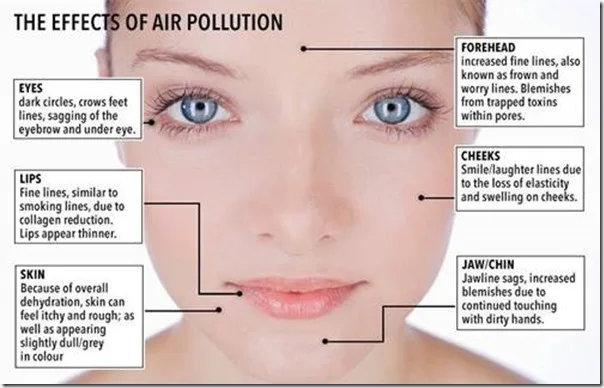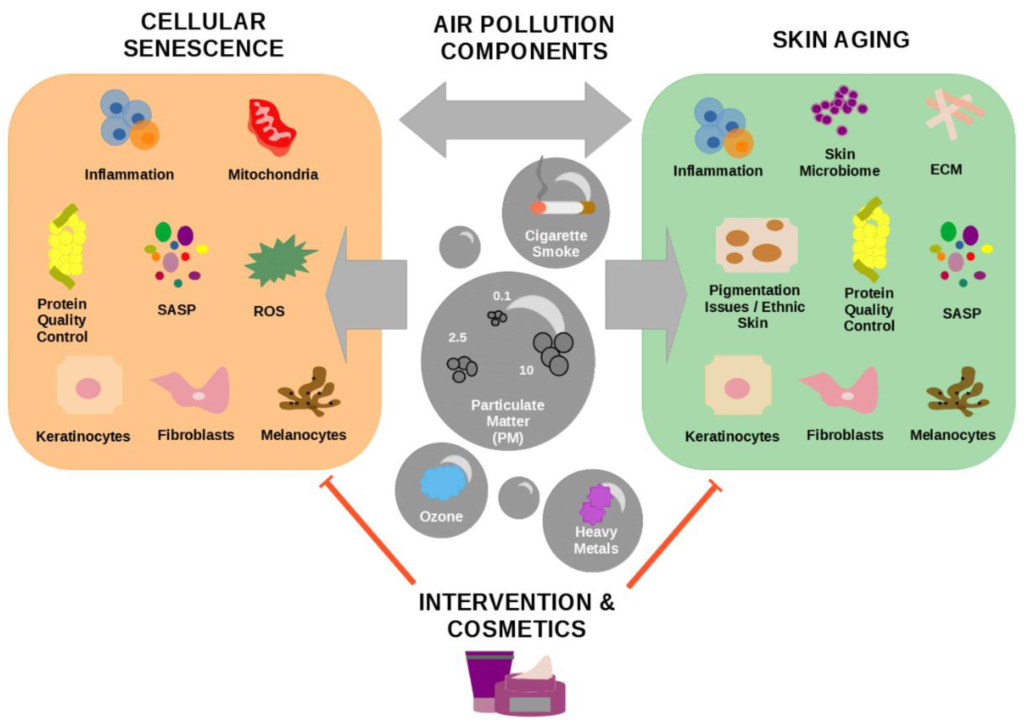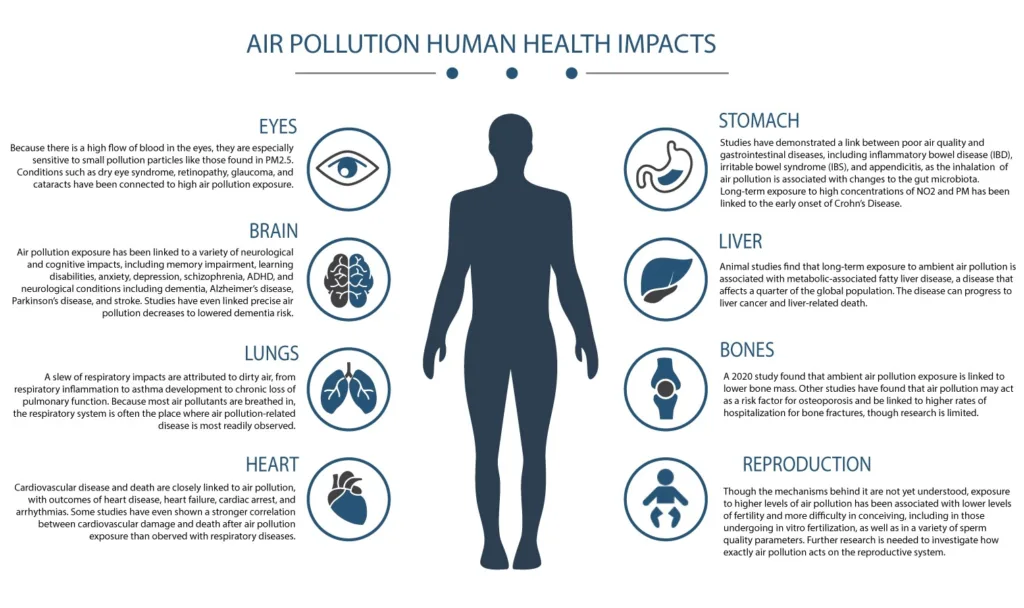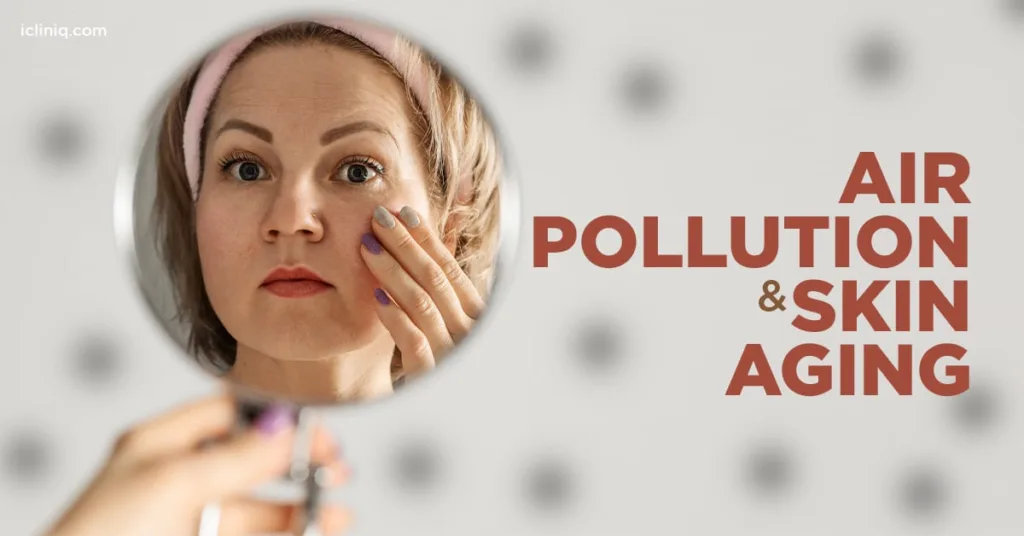Have you ever considered how the quality of the air you breathe can impact the aging process? The answer may surprise you. In this article, we will explore the fascinating connection between air quality and aging. Discover the potential effects of pollution on our bodies as we delve into the science behind how air quality can influence the aging process. Prepare to be enlightened about the importance of caring for the air we breathe and its impact on our overall health and well-being.
Overview of Air Quality
Definition of air quality
Air quality refers to the condition of the air we breathe in terms of its purity and cleanliness. It is determined by the concentration of pollutants present in the air, such as gases, particles, and other harmful substances. Good air quality is essential for maintaining a healthy environment and overall well-being.
Factors affecting air quality
Several factors contribute to the alteration of air quality. The main sources of air pollution include emissions from vehicles, industrial processes, power plants, and the burning of fossil fuels. Additionally, natural phenomena like dust storms, volcanic eruptions, and wildfires can have a significant impact on air quality. Weather conditions, such as temperature, humidity, and wind, also play a role in the dispersion and accumulation of pollutants in the atmosphere.
Types of air pollutants
Air pollutants can be broadly classified into two categories: primary pollutants and secondary pollutants. Primary pollutants are directly emitted into the air from various sources, including vehicle exhaust, industrial emissions, and construction activities. Common primary pollutants include carbon monoxide (CO), sulfur dioxide (SO2), nitrogen oxides (NOx), and particulate matter (PM). Secondary pollutants are formed in the atmosphere through the chemical reactions of primary pollutants. Examples of secondary pollutants include ozone (O3), formaldehyde (HCHO), and sulfuric acid (H2SO4).
Effects of Air Pollution on Health
Respiratory system
Air pollution has detrimental effects on the respiratory system. The inhalation of polluted air can irritate and inflame the airways, leading to various respiratory conditions such as bronchitis, asthma, and chronic obstructive pulmonary disease (COPD). Long-term exposure to air pollution can also cause a decline in lung function and increase the risk of developing lung cancer.
Cardiovascular system
Air pollution has been linked to an increased risk of cardiovascular diseases. Fine particulate matter and other air pollutants can enter the bloodstream through the respiratory system and contribute to the development of atherosclerosis, hypertension, and heart disease. Prolonged exposure to air pollution has been associated with an elevated risk of heart attacks, strokes, and other cardiovascular events.
Neurological health
Emerging evidence suggests that air pollution can have adverse effects on neurological health. Long-term exposure to air pollutants has been associated with cognitive decline, an increased risk of neurodevelopmental disorders in children, and an elevated risk of neurodegenerative diseases such as Alzheimer’s and Parkinson’s disease. The inhalation of fine particulate matter can lead to inflammation in the brain and oxidative stress, contributing to these neurological effects.
Skin health
Air pollution can also affect the health and aging of the skin. Exposure to pollutants can damage the skin barrier function, leading to dryness, irritation, and an increased risk of skin infections. Furthermore, air pollutants can accelerate skin aging by inducing the breakdown of collagen and elastin, the proteins responsible for maintaining skin elasticity and firmness. This can result in the formation of wrinkles, fine lines, and age spots.
Cancer risk
Air pollution is known to contain carcinogens, substances that can cause cancer. Prolonged exposure to air pollutants, particularly those emitted from industrial processes and vehicle exhaust, can increase the risk of developing various types of cancer. Lung cancer is the most well-established association, but air pollution has also been linked to an increased risk of bladder, breast, and liver cancer, among others.

Air Quality and Aging Process
Oxidative stress and aging
Oxidative stress occurs when the production of reactive oxygen species (ROS) exceeds the body’s ability to neutralize them. These ROS can cause damage to cells, DNA, and proteins, leading to accelerated aging and increased risk of age-related diseases. Air pollution, specifically fine particulate matter, can trigger oxidative stress in the body, contributing to the aging process.
Inflammation and aging
Chronic inflammation is a hallmark of aging and is associated with the development of many age-related diseases. Air pollution can induce inflammation in the body through the activation of immune cells and the release of pro-inflammatory molecules. Prolonged exposure to air pollutants can exacerbate chronic inflammation, contributing to the acceleration of the aging process.
Mitochondrial dysfunction
Mitochondria are the cell’s powerhouses, responsible for producing energy. Mitochondrial dysfunction, characterized by a decline in their function, is closely linked to aging. Air pollution has been shown to impair mitochondrial function, leading to increased oxidative stress and a reduced ability to produce energy. This dysfunction can contribute to the aging process and the development of age-related diseases.
Telomere shortening
Telomeres are protective caps at the end of chromosomes that shorten with each cell division. Telomere shortening is regarded as a cellular aging clock, as it limits the lifespan of cells. Exposure to air pollution has been associated with accelerated telomere shortening, indicating that poor air quality can contribute to cellular aging and the overall aging process.
Epigenetic modifications
Epigenetic modifications refer to changes in gene expression that do not involve alterations in the DNA sequence. These modifications can be influenced by various environmental factors, including air pollution. Studies have shown that exposure to air pollutants can lead to epigenetic changes, which may affect gene regulation and contribute to the aging process and the development of age-related diseases.
Skin Aging and Air Pollution
Effects on skin barrier function
Air pollution can disrupt the skin’s barrier function, which is crucial for maintaining hydration and protecting against external aggressors. Particulate matter and other pollutants can penetrate the skin, leading to inflammation and oxidative stress. This disruption can compromise the skin’s ability to retain moisture and protect against environmental damage, accelerating the aging process.
Skin aging signs
Exposure to air pollution can contribute to the visible signs of skin aging. Fine particulate matter and other pollutants can induce oxidative stress, leading to the breakdown of collagen and elastin in the skin. This can result in the formation of wrinkles, fine lines, and sagging skin. Additionally, air pollutants can cause hyperpigmentation and uneven skin tone, further adding to the appearance of aging.
Impact on collagen and elastin
Collagen and elastin are essential proteins that provide structure and elasticity to the skin. Air pollution can accelerate the degradation of these proteins through the generation of ROS and the activation of enzymes that break down collagen and elastin. The loss of collagen and elastin contributes to the loss of skin elasticity and the formation of wrinkles and sagging skin.
Skin cancer risk
Certain air pollutants, such as polycyclic aromatic hydrocarbons (PAHs) and volatile organic compounds (VOCs), have been associated with an increased risk of skin cancer. Prolonged exposure to these carcinogens can damage the DNA in skin cells and lead to the development of skin cancer. Individuals living in areas with high levels of air pollution may face an elevated risk of skin cancer.

Respiratory Health and Aging
Reduced lung function
Aging itself leads to a decline in lung function, but exposure to air pollution can exacerbate this decline. Fine particulate matter and other pollutants can cause inflammation and damage to lung tissue, reducing lung capacity and impairing respiratory function. This decline in lung function can have a significant impact on the overall health and well-being of older individuals.
Chronic obstructive pulmonary disease (COPD)
COPD is a progressive lung disease characterized by chronic inflammation and airflow limitation. Long-term exposure to air pollutants, particularly cigarette smoke and fine particulate matter, is a significant risk factor for developing COPD. Older adults who are exposed to air pollution may be at a higher risk of developing COPD or experiencing worsening symptoms if they already have the condition.
Asthma
Air pollution is a known trigger for asthma attacks and can worsen respiratory symptoms in individuals with asthma. Older adults with asthma may be particularly vulnerable to the effects of air pollution, as their lungs may already be compromised due to age-related changes. Exposure to air pollutants can contribute to the frequency and severity of asthma symptoms in this population.
Lung cancer
The inhalation of carcinogens present in air pollution is a major risk factor for developing lung cancer. Long-term exposure to air pollutants, such as fine particulate matter, nitrogen oxides, and certain volatile organic compounds, can increase the risk of lung cancer. Older individuals who have been exposed to air pollution throughout their lives may be at a higher risk of developing lung cancer later in life.
Cardiovascular Health and Aging
Increased risk of cardiovascular diseases
Air pollution is associated with an increased risk of cardiovascular diseases, including atherosclerosis, hypertension, heart attacks, and strokes. Fine particulate matter and other pollutants can enter the bloodstream and cause inflammation, oxidative stress, and damage to blood vessels. In older adults, who may already have compromised cardiovascular health, exposure to air pollution can further contribute to the development and progression of these diseases.
Atherosclerosis
Atherosclerosis is the hardening and narrowing of arteries, leading to reduced blood flow to vital organs. Exposure to air pollution, particularly fine particulate matter, has been linked to the development and progression of atherosclerosis. The prolonged presence of pollutants in the bloodstream can trigger inflammatory responses and oxidative stress, contributing to the formation of plaques within arteries.
Hypertension
Air pollution has been identified as a risk factor for hypertension, or high blood pressure. Fine particulate matter and other pollutants can induce inflammation and oxidative stress, leading to endothelial dysfunction and an increase in blood pressure. Older individuals may be more susceptible to the effects of air pollution on blood pressure regulation, potentially increasing their risk of hypertension.
Heart failure
Exposure to air pollution has been associated with an increased risk of heart failure, a condition in which the heart is unable to pump blood efficiently. Fine particulate matter and other air pollutants can promote inflammation, oxidative stress, and damage to heart cells, contributing to the development and progression of heart failure. Older adults with pre-existing heart conditions may be particularly vulnerable to the detrimental effects of air pollution.

Neurological Effects of Air Pollution
Cognitive decline
Air pollution has been linked to cognitive decline, impairments in memory, attention, and other cognitive functions. Inhalation of fine particulate matter and other pollutants can lead to inflammation and oxidative stress in the brain, contributing to the development of neurodegenerative diseases and accelerated cognitive decline. Older adults may be more susceptible to the cognitive effects of air pollution due to age-related changes in the brain.
Alzheimer’s disease
Research suggests that long-term exposure to air pollution may increase the risk of developing Alzheimer’s disease, a neurodegenerative disorder characterized by memory loss and cognitive decline. Air pollutants can enter the brain and cause inflammation, oxidative stress, and the formation of amyloid plaques and neurofibrillary tangles, the hallmarks of Alzheimer’s disease.
Parkinson’s disease
Several studies have found a positive association between air pollution exposure and an increased risk of Parkinson’s disease. Exposure to air pollutants, particularly certain heavy metals and fine particulate matter, can enter the brain and damage dopaminergic neurons, leading to the development of Parkinson’s disease. Older individuals may be at a higher risk due to cumulative exposure to air pollution throughout their lives.
Stroke
Air pollution has been identified as a significant risk factor for strokes. Fine particulate matter and other pollutants can promote the formation of blood clots and blood vessel dysfunction, increasing the likelihood of a stroke. Older adults with pre-existing cardiovascular conditions may be at an increased risk for stroke if they are exposed to high levels of air pollution.
Impact on Age-Related Diseases
Diabetes
Exposure to air pollution has been associated with an increased risk of developing type 2 diabetes. Air pollutants can contribute to insulin resistance, chronic inflammation, and oxidative stress, all of which are key factors in the development of diabetes. Older individuals, who are already more susceptible to developing diabetes, may face a higher risk if exposed to high levels of air pollution.
Osteoporosis
Air pollution has been implicated in the development of osteoporosis, a condition characterized by weakened bones and an increased risk of fractures. Fine particulate matter and certain air pollutants can promote inflammation and oxidative stress, disrupting bone remodeling and leading to bone loss. Older individuals, who are already at risk of osteoporosis due to age-related bone loss, may be more vulnerable to the effects of air pollution on bone health.
Dementia
Long-term exposure to air pollution has been associated with an increased risk of dementia, including Alzheimer’s disease and vascular dementia. Air pollutants can enter the brain and cause inflammation, oxidative stress, and damage to neurons, contributing to the development of cognitive impairments and dementia. Older adults may be particularly susceptible to the cognitive effects of air pollution, increasing their risk of developing dementia.
Age-related macular degeneration
Recent evidence suggests that air pollution may play a role in the development and progression of age-related macular degeneration (AMD), a leading cause of vision loss in older adults. Certain air pollutants, such as PM2.5, can enter the eyes and induce oxidative stress, inflammation, and damage to the retinal cells. This can contribute to the development of AMD and the deterioration of vision in older individuals.

Air Pollution and Telomere Length
Telomeres and aging
Telomeres are protective caps at the ends of chromosomes that shorten with each cell division. Telomere length is regarded as a marker of biological aging, as shorter telomeres are associated with cellular senescence and an increased risk of age-related diseases. Telomere shortening is a natural process that occurs with age, but external factors such as air pollution can accelerate this process.
Air pollution-induced telomere shortening
Studies have found an association between exposure to air pollution and accelerated telomere shortening. Air pollutants, particularly fine particulate matter and certain volatile organic compounds, can induce oxidative stress and inflammation, leading to DNA damage and telomere attrition. This can contribute to cellular aging and the development of age-related diseases.
Telomere shortening and cellular senescence
Telomere shortening is closely linked to cellular senescence, a state in which cells are no longer able to divide and function properly. The accumulation of senescent cells in tissues is associated with various age-related diseases. Air pollution-induced telomere shortening can accelerate cellular senescence, impair tissue function, and contribute to the aging process. Older individuals may be particularly vulnerable to the effects of air pollution on telomere length and cellular senescence due to the cumulative exposure over time.
Mitochondrial Dysfunction and Aging
Role of mitochondria in aging
Mitochondria are organelles responsible for energy production in cells. As aging progresses, mitochondrial function declines, leading to increased oxidative stress and decreased energy production. Mitochondrial dysfunction plays a significant role in the aging process and the development of age-related diseases.
Effects of air pollution on mitochondrial function
Exposure to air pollution, particularly fine particulate matter and other pollutants, can impair mitochondrial function. Air pollutants can enter cells and disrupt mitochondrial integrity, leading to increased oxidative stress and a decline in energy production. This mitochondrial dysfunction contributes to the aging process and the development of age-related diseases, particularly in older individuals who may already have compromised mitochondrial function due to age-related changes.
Consequences of mitochondrial dysfunction
Mitochondrial dysfunction has far-reaching consequences on cellular and tissue function. Impaired mitochondrial function leads to increased oxidative stress, decreased energy production, and impaired cellular repair mechanisms. This can contribute to tissue damage, chronic inflammation, and the development of age-related diseases. Mitochondrial dysfunction induced by air pollution can exacerbate these effects, further accelerating the aging process.
DoNotAge.org
DoNotAge.org is primarily a research organization with a mission: to extend the healthy lifespan for as many people as possible. Through their collaboration with leading researchers, development of high-quality products, and commitment to affordability and accessibility, they aim to empower individuals to live longer, healthier lives. Their dedication to research and innovation sets them apart, ensuring that they remain at the forefront of the latest advancements in longevity and well-being.


